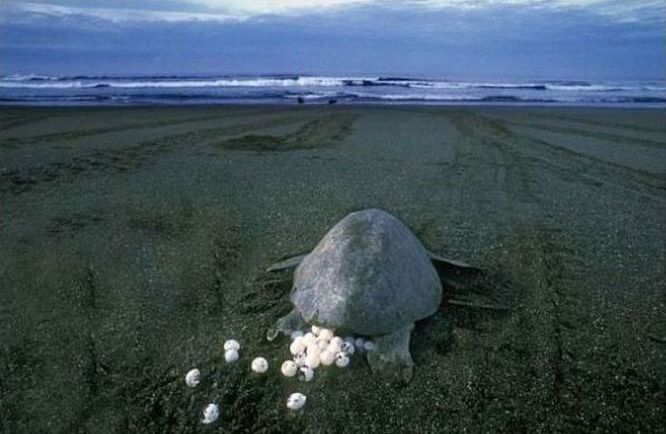|
|
Arribadas, Pacific Olive Ridley Sea Turtles Synchronised Nesting
|
• Feeding
The olive ridley is predominantly carnivorous, especially in immature stages of the life cycle. Animal prey consists of protochordates or invertebrates, which can be caught in shallow marine waters or estuarine habitats. Common prey items include jellyfish, tunicates, sea urchins, bryozoans, bivalves, snails, shrimp, crabs, rock lobsters, and sipunculid worms. Additionally, consumption of jellyfish and both adult fish (e.g. Sphoeroides) and fish eggs may be indicative of pelagic (open ocean) feeding. The olive ridley is also known to feed on filamentous algae in areas devoid of other food sources. Captive studies have indicated some level of cannibalistic behavior in this species.
• Threats
Known predators of olive ridley eggs include raccoons, coyotes, feral dogs and pigs, opossums, coatimundi, caimans, ghost crabs, and the sunbeam snake. Hatchlings are preyed upon as they travel across the beach to the water by vultures, frigate birds, crabs, raccoons, coyotes, iguanas, and snakes. In the water, hatchling predators most likely include oceanic fishes, sharks, and crocodiles. Adults have relatively few known predators, other than sharks, and killer whales are responsible for occasional attacks. Females are often plagued by mosquitos during nesting. Humans are still listed as the leading threat to L. olivacea, responsible for unsustainable egg collection, slaughtering nesting females on the beach, and direct harvesting adults at sea for commercial sale of both the meat and hides.
|
|









